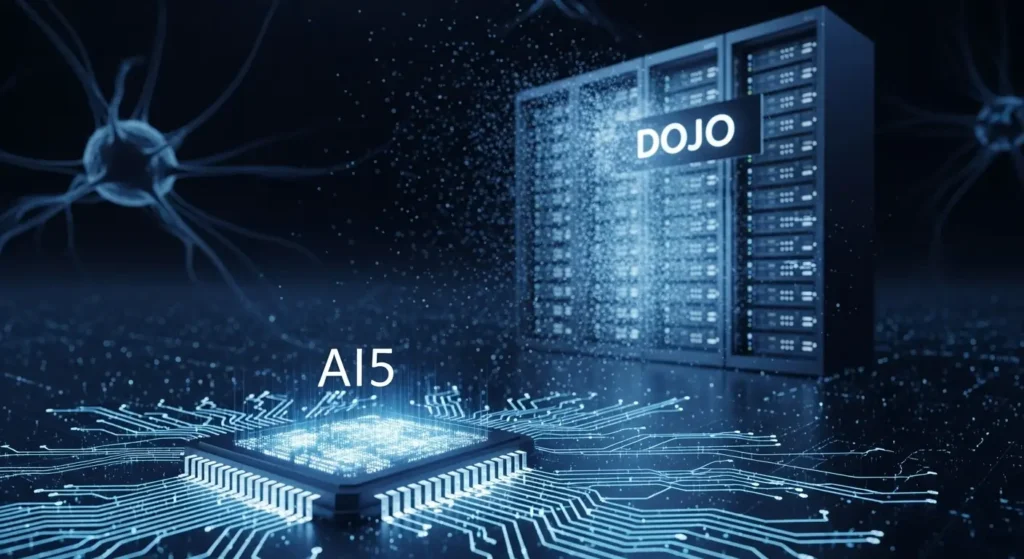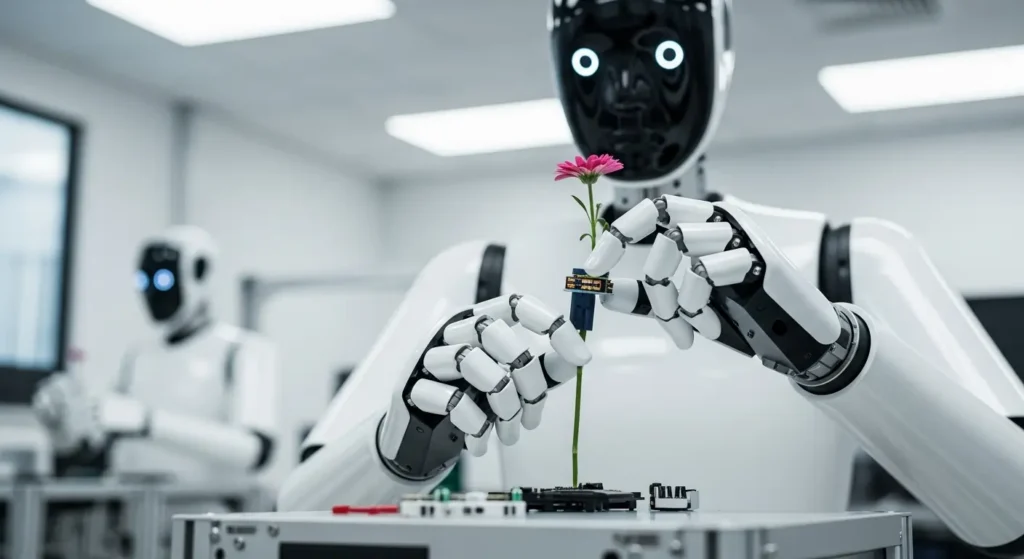Tesla refocuses AI research on inference chips AI5 and AI6, ending Dojo supercomputer work to accelerate self-driving and Optimus robot capabilities.
Tesla’s AI Chip Strategy Shift: Musk Refocuses on AI5 and AI6 for Next-Gen Autonomy
In a decisive move reshaping Tesla’s place in the competitive artificial intelligence landscape, CEO Elon Musk announced that the company will streamline AI chip research to focus exclusively on developing next-generation inference chips — AI5 and AI6.
This strategic change, dubbed the “Tesla’s AI Chip Strategy Shift,” signals the company’s departure from training-centric projects like the Dojo supercomputer in favor of accelerating performance in self-driving vehicles and humanoid robots.
Table of Contents
From Dojo’s Ambition to Inference Efficiency

Tesla’s Dojo supercomputer was once central to its AI vision, designed to handle massive machine learning workloads for autonomous driving and robotics training.
However, Musk confirmed that the dedicated Dojo team has been disbanded, with resources reallocated toward specialized inference chips.
By focusing on AI5 and AI6 chips, Tesla aims to:
- Optimize real-time decision-making in self-driving cars.
- Boost onboard computing performance without relying on cloud-based processing.
- Enhance efficiency for Tesla’s Optimus humanoid robots.
This pivot reflects the industry’s growing emphasis on applying AI models rather than exclusively scaling their training systems.
Why Inference Chips Are the Future
Inference chips are designed to run pre-trained AI models in real time, enabling immediate responses without heavy computational delays.
For Tesla, this translates into:
- Safer Autonomy: Faster processing for road scenarios and obstacle detection.
- Energy Efficiency: Reduced power consumption compared to large-scale training clusters.
- Scalability: Easier integration into millions of vehicles and robots.
Musk has often noted that the bottleneck in deploying advanced AI systems lies not only in model accuracy but also the speed and power at which those models can operate in real-world environments.
Impact on Self-Driving Vehicles and Optimus Robots

The AI5 and AI6 chips are expected to deliver breakthroughs in:
- Tesla Autopilot and Full Self-Driving (FSD) Systems — more precise lane management, traffic anticipation, and environmental mapping.
- Optimus Robot Functions — faster movement planning, more human-like interaction, and expanded task complexity.
Industry experts believe the shift could shorten Tesla’s time to market for fully autonomous capabilities, potentially giving it an edge in regulatory approvals and consumer adoption.
A Sign of AI Maturity
October 4, 2025 marks a milestone for AI’s evolving role in core business infrastructure. Across industries, companies are moving from building experimental AI systems to refining them into commercially viable, efficient products.
Tesla’s decision mirrors a broader market trend: prioritizing operational AI application over purely experimental, resource-intensive projects.
This aligns with global competition, as tech firms in China, Europe, and the US race to dominate the inference chip space, which is forecasted to be a multi-billion-dollar segment in the coming decade.
Business and Regulatory Considerations
Tesla’s reallocation of resources could boost profitability by reducing the costs associated with massive training clusters.
Meanwhile, inference-focused development may help Tesla align with emerging AI safety regulations that emphasize transparency, stability, and predictable performance.
By handling AI processing directly on-device, Tesla could also strengthen data privacy safeguards, a growing concern among regulators and consumers alike.
Also see: Meta’s Massive AI Infrastructure Investment & Ad Integration
Bottom Line
The “Tesla’s AI Chip Strategy Shift” isn’t just a technical decision — it’s a strategic pivot toward real-world impact.
By narrowing its focus to AI5 and AI6 inference chips, Tesla positions itself to accelerate self-driving vehicles’ reliability and bring humanoid robots closer to mainstream adoption.
For enthusiasts, investors, and tech-watchers, the message is clear: Tesla’s AI future will be built not in the cloud, but on the road and in the home — powered by the silicon hearts of AI5 and AI6.